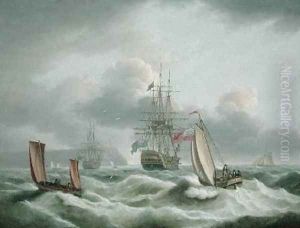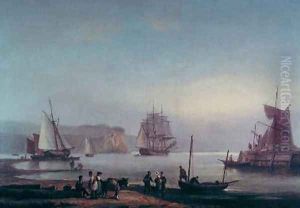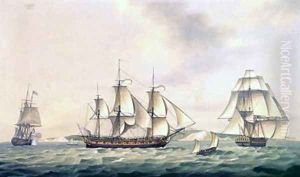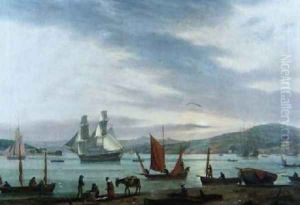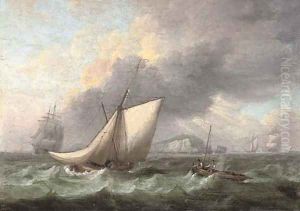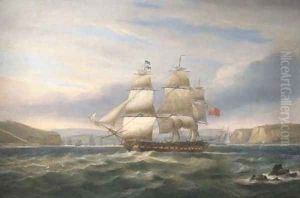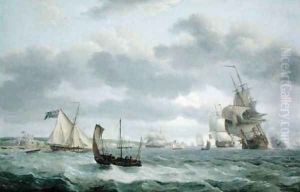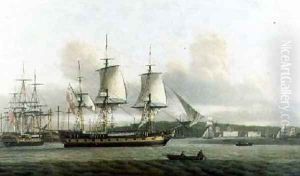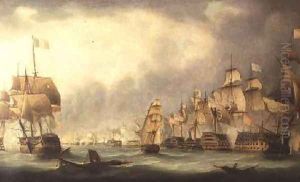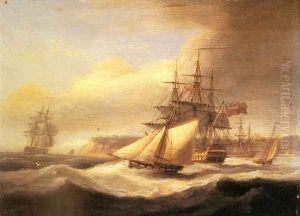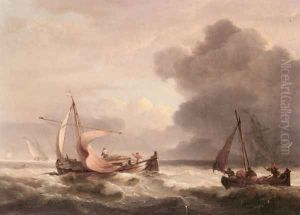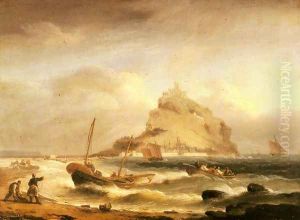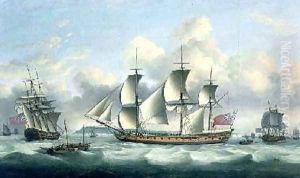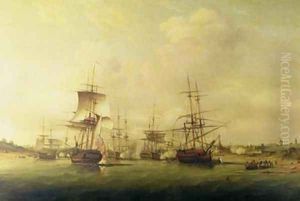Thomas Luny Paintings
Thomas Luny, born in 1759 in Cornwall, England, was an English painter known for his marine and ship paintings. His works are distinguished by their detailed depiction of nautical scenes, often featuring naval battles, merchant ships, and serene coastal landscapes. Luny's career as an artist was shaped by his love for the sea, and he spent a significant amount of time in various British ports, capturing the vibrancy of maritime life.
Luny lived during a period of significant naval history, which included the American War of Independence, the French Revolutionary Wars, and the Napoleonic Wars. These events provided ample subject matter for his paintings, which were highly popular among naval officers and maritime merchants who appreciated his accuracy and attention to detail.
Despite suffering from arthritis in his hands later in life, Luny continued to paint prolifically. He moved to Teignmouth in Devon, where the maritime environment further inspired his work. Even as his condition worsened, he adapted his painting technique to be able to hold the brush between his palms, and he produced some of his finest works during this time.
Thomas Luny's legacy is comprised of over 3,000 paintings, a testament to his dedication and productivity. His meticulous approach to documenting ships and sea battles has also made his works valuable historical records of the maritime history of his time. Luny died in 1837 in Teignmouth, leaving behind a rich portfolio of marine art that continues to be appreciated by art historians and naval enthusiasts alike.



